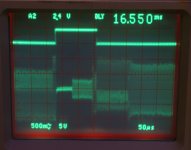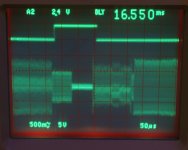andy
Experienced Member
Thanks for posting those schematics, they will be helpful in my CM-6426S project.
My drive spins up, and appears to pass whatever power on self testing it does. The drive is ready, but when I try to low level format it, it completes cylinder 0, makes a very quiet click, then stops responding. As an experiment, I taped over the step line on the edge connector, and it happily reformatted cylinder 0 640 times without an error. At least this tells me all 4 heads are working.
Next, I tried momentarily grounding the step line while the drive select line was also grounded. I got the same quiet click, and the drive again stopped responding. Clearly it's not happy about something when it tries to step to cylinder 1. I will be examining the head servo circuit more closely and post back soon.
My drive spins up, and appears to pass whatever power on self testing it does. The drive is ready, but when I try to low level format it, it completes cylinder 0, makes a very quiet click, then stops responding. As an experiment, I taped over the step line on the edge connector, and it happily reformatted cylinder 0 640 times without an error. At least this tells me all 4 heads are working.
Next, I tried momentarily grounding the step line while the drive select line was also grounded. I got the same quiet click, and the drive again stopped responding. Clearly it's not happy about something when it tries to step to cylinder 1. I will be examining the head servo circuit more closely and post back soon.



